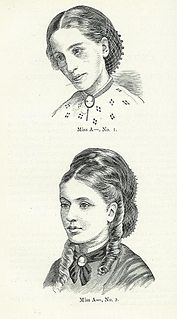An eating disorder is a mental disorder defined by abnormal eating behaviors that negatively affect a person's physical or mental health. Only one eating disorder can be diagnosed at a given time. Types of eating disorders include binge eating disorder, where the patient eats a large amount in a short period of time; anorexia nervosa, where the person has an intense fear of gaining weight and restricts food or overexercises to manage this fear; bulimia nervosa, where individuals eat a large quantity (binging) then try to rid themselves of the food (purging); pica, where the patient eats non-food items; rumination syndrome, where the patient regurgitates undigested or minimally digested food; avoidant/restrictive food intake disorder (ARFID), where people have a reduced or selective food intake due to some psychological reasons ; and a group of other specified feeding or eating disorders. Anxiety disorders, depression and substance abuse are common among people with eating disorders. These disorders do not include obesity. People often experience comorbidity between an eating disorder and OCD. It is estimated 20-60% of patients with an ED have a history of OCD.

Bulimia nervosa, also known as simply bulimia, is an eating disorder characterized by binge eating followed by purging or fasting, and excessive concern with body shape and weight. The aim of this activity is to expel the body of calories eaten from the binging phase of the process. Binge eating refers to eating a large amount of food in a short amount of time. Purging refers to the attempts to get rid of the food consumed. This may be done by vomiting or taking laxatives. Other efforts to lose weight may include the use of diuretics, stimulants, water fasting, or excessive exercise. Most people with bulimia are at a normal weight. The forcing of vomiting may result in thickened skin on the knuckles, breakdown of the teeth and effects on metabolic rate and caloric intake which cause thyroid dysfunction. Bulimia is frequently associated with other mental disorders such as depression, anxiety, borderline personality disorder, bipolar disorder and problems with drugs or alcohol. There is also a higher risk of suicide and self-harm.
Orthorexia nervosa (ON) is a proposed eating disorder characterized by an excessive preoccupation with eating healthy food. The term was introduced in 1997 by American physician Steven Bratman, M.D. He suggested that some people's dietary restrictions intended to promote health may paradoxically lead to unhealthy consequences, such as social isolation, anxiety, loss of ability to eat in a natural, intuitive manner, reduced interest in the full range of other healthy human activities, and, in rare cases, severe malnutrition or even death.
Promotion of anorexia is the promotion of behaviors related to the eating disorder anorexia nervosa. It is often referred to simply as pro-ana or ana. The lesser-used term pro-mia refers likewise to bulimia nervosa and is sometimes used interchangeably with pro-ana. Pro-ana groups differ widely in their stances. Most claim that they exist mainly as a non-judgmental environment for anorexics; a place to turn to, to discuss their illness, and to support those who choose to enter recovery. Others deny anorexia nervosa is a mental illness and claim instead that it is a lifestyle choice that should be respected by doctors and family.
Binge eating disorder (BED) is an eating disorder characterized by frequent and recurrent binge eating episodes with associated negative psychological and social problems, but without the compensatory behaviors common to bulimia nervosa, OSFED, or the binge-purge subtype of anorexia nervosa.
Overeating occurs when an individual consumes more calories in relation to the energy that is expended via physical activity or expelled via excretion, leading to weight gain and often obesity. Overeating is the defining characteristic of binge eating disorder.

The Beauty Myth: How Images of Beauty Are Used Against Women is a nonfiction book by Naomi Wolf, originally published in 1990 by Chatto & Windus in the UK and William Morrow & Co (1991) in the United States. It was republished in 2002 by HarperPerennial with a new introduction.
Sexual anorexia is a term coined in 1975 by psychologist Nathan Hare to describe a fear of or deep aversion to sexual activity. It is a pathological loss of "appetite" for romantic-sexual interaction, often the result of a fear of intimacy to the point that the person has severe anxiety surrounding sexual activity and emotional aspects. The term largely exists in a colloquial sense and is not presently classified as a disorder in the Diagnostic Statistical Manual.

Compulsive behavior is defined as performing an action persistently and repetitively. Compulsive behaviors could be an attempt to make obsessions go away. The act is usually a small, restricted and repetitive behavior, yet not disturbing in a pathological way. Compulsive behaviors are a need to reduce apprehension caused by internal feelings a person wants to abstain from or control. A major cause of compulsive behavior is said to be obsessive–compulsive disorder (OCD). "The main idea of compulsive behavior is that the likely excessive activity is not connected to the purpose to which it appears directed." There are many different types of compulsive behaviors including shopping, hoarding, eating, gambling, trichotillomania and picking skin, itching, checking, counting, washing, sex, and more. Also, there are cultural examples of compulsive behavior.
Diabulimia, also known as ED-DMT1 in the US or T1ED in the UK, is an eating disorder in which people with type 1 diabetes deliberately give themselves less insulin than they need or stop taking it altogether for the purpose of weight loss. Diabulimia is not recognized as a formal psychiatric diagnosis in the DSM-5. Because of this, some in the medical or psychiatric communities use the phrases "disturbed eating behavior" or "disordered eating behavior" and disordered eating (DE) are quite common in medical and psychiatric literature addressing patients who have type 1 diabetes and manipulate insulin doses to control weight along with exhibiting bulimic behavior.

The National Eating Disorders Association (NEDA) is an American non-profit organization devoted to preventing eating disorders, providing treatment referrals, and increasing the education and understanding of eating disorders, weight, and body image. The National Eating Disorders Association organizes and sponsors National Eating Disorders Week. Also known as NEDAwareness Week, it takes place during the last week of February, and is "a collective effort of primarily volunteers, including eating disorder professionals, health care providers, students, educators, social workers, and individuals committed to raising awareness of the dangers surrounding eating disorders and the need for early intervention and treatment."

Tanning dependence or tanorexia is a syndrome where an individual appears to have a physical or psychological dependence on sunbathing or the use of ultraviolet (UV) tanning beds to darken the complexion of the skin. Compulsive tanning may satisfy the definition of a behavioral addiction as well.

Anorexia mirabilis, also known as holy anorexia or inedia prodigiosa or colloquially as fasting girls, is an eating disorder, similar to that of anorexia nervosa, that was common in, but not restricted to, the Middle Ages in Europe, largely affecting Catholic nuns and religious women. Self-starvation was common among religious women, as a way to imitate the suffering of Jesus in his torments during the Passion, as women were largely restricted to causing themselves voluntary pain by fasting, whereas holy men experienced suffering through physical punishment, voluntary poverty, and celibacy.

Anorexia nervosa, often referred to simply as anorexia, is an eating disorder characterized by low weight, food restriction, body image disturbance, fear of gaining weight, and an overpowering desire to be thin. Anorexia is a term of Greek origin: an- and orexis, translating literally to "a loss of appetite"; the adjective nervosa indicating the functional and non-organic nature of the disorder. Anorexia nervosa was coined by Gull in 1873 but, despite literal translation, the feeling of hunger is frequently present and the pathological control of this instinct is a source of satisfaction for the patients.
Body image is a complex construct, often used in the clinical context of describing a patient's cognitive perception of their own body. The medical concept began with the work of the Austrian neuropsychiatrist and psychoanalyst Paul Schilder, described in his book The Image and Appearance of the Human Body first published in 1935. The term “body image” was officially introduced by Schilder himself and his widely used definition is: “body image is the picture of our own body we form in our mind, that is to say the way in which the body appears to ourselves”. In research with the term “body image” we currently refer to a conscious mental representation of one’s own body, which involves affects, attitudes, perceptual components and cognition. On the contrary the term “body schema” was initially used to describe an unconscious body mental representation fundamental for action. Keizer and colleagues (2013) suggest the following definition: “[body schema is] an unconscious, sensorimotor, representation of the body that is invoked in action. In light of recent scientific developments regarding the multisensory integration of body sensations, the distinction between body image and body schema appears simplistic and probably no longer useful for scientific research and clinical purposes.
Exercise addiction is a state characterized by a compulsive engagement in any form of physical exercise, despite negative consequences. While regular exercise is generally a healthy activity, exercise addiction generally involves performing excessive amounts of exercise to the detriment of physical health, spending too much time exercising to the detriment of personal and professional life, and exercising regardless of physical injury. It may also involve a state of dependence upon regular exercise which involves the occurrence of severe withdrawal symptoms when the individual is unable to exercise. Differentiating between addictive and healthy exercise behaviors is difficult but there are key factors in determining which category a person may fall into. Exercise addiction shows a high comorbidity with eating disorders.
Drunkorexia is a colloquialism for anorexia or bulimia combined with an alcohol use disorder. The term is generally used to denote the utilization of extreme weight control methods to compensate for planned binge drinking. Research on the combination of an eating disorder and binge drinking has primarily focused on college-aged women, though the phenomenon has also been noted among young men. Studies suggest that individuals engage in this combination of self-imposed malnutrition and binge drinking to avoid weight gain from alcohol, to save money from purchasing alcohol, and to facilitate alcohol intoxication.

Eugenia Sullivan Cooney is an American YouTuber and Internet personality. She was born in Massachusetts and is based in Greenwich, Connecticut and Los Angeles, California. She initially began livestreaming on broadcasting service YouNow, eventually creating her YouTube channel in 2011, which has garnered over 2 million subscribers. Known for her emo and gothic looks, Cooney's content mainly involves clothing hauls, beauty, cosplay and vlogs of her daily life. She also regularly livestreams on Twitch.
Body image disturbance (BID) is a common symptom in patients with eating disorders and is characterized by an altered perception of one's own body.







